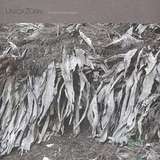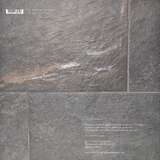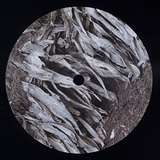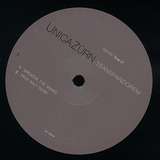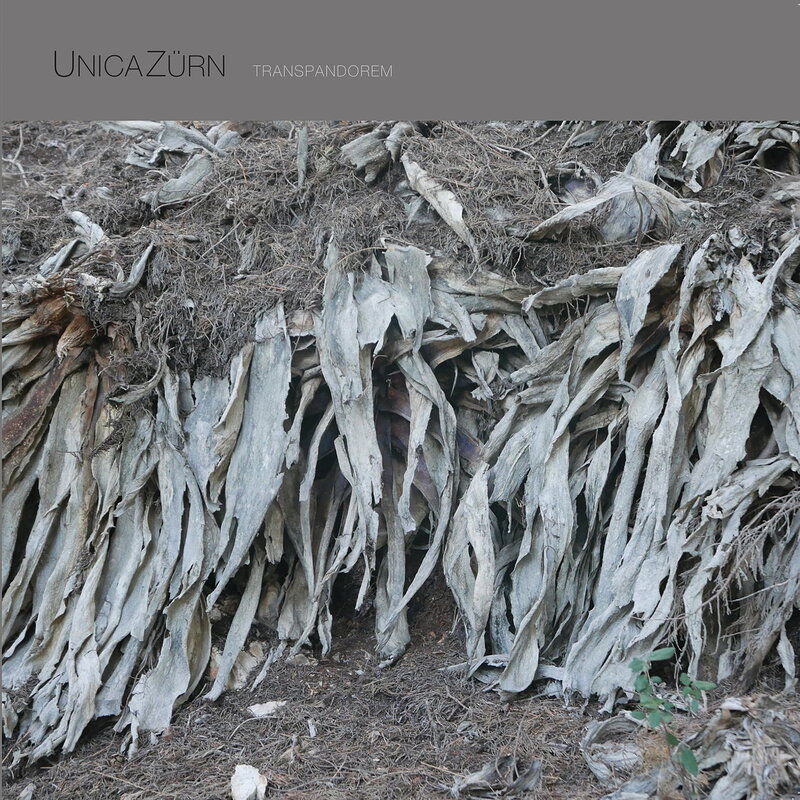UnicaZürn: Transpandorem
Side-long, ‘ceaselessly evolving musical compositions’ - Recommended!
‘UnicaZürn build their long, ceaselessly evolving musical compositions through a process of improvisation followed by careful editing and processing. Their music, drawn from subconscious associations while recording, is frequently aquatic or oceanic in overall mood and texture. Knight has spent most of his life living on the banks of the Thames while Thrower resides on the East Sussex coast, and their musical flights of imagination tend toward rolling river dynamics and the open seas of synthesised sound.
For UnicaZürn, tidal imagery, oceanic forms and the slow rhythms of coastal water are a recurring structural presence, with strong associations of rootlessness, of being far away from home, a stranger in a strange land. The inability of human lungs to breathe water endows rivers and seas with a special poetics: a boundary between two different but inter-related states. On the one hand, solidity, clarity, definition; on the other, fluidity, uncertainty, dissolution. The sense of a threshold between opposites gives rise to an elusive otherness, suggesting a portal through which the everyday world can be escaped. Death under the water, the survivors of a lost kingdom clinging to the rocks of an unfamiliar island, a coastal boat ride into deepest abstraction, a deserted beach expressing a world outside reality.
A sexual frisson too: a hovering at the brink, poised at the turbulent edge of pleasure, swept away into oblivion. Do we head toward the sea when we want to escape? And at the coastline, do we walk to the edge because we want to jump, or be swept away by an unexpected wave? There’s a darkness in the sea, even if illuminated by the most dazzling sunshine. Open horizons shows the clutter of our lives to be transient, and as we look to the sea we feel a dizzying sense of the eternal. Aquatic sensibility, oceanic timescales: the action of the salt sea beating on the shore. Each grain of sand a rock smashed to dust. Beaches are cosmic, elemental. They are images of time.
UnicaZürn’s core instrumentation blends analogue synthesiser, mellotron and electric piano with electric guitar and clarinet. Both Thrower and Knight draw upon their love and wide experience of of electronic music, from the outer shores of Stockhausen to the outer spaceways of Tangerine Dream. In addition, Knight is reknowned for his pioneering multi-textured fretwork with Danielle Dax and his ambient guitar settings for Lydia Lunch, while Thrower’s reed playing provided a distinctive melancholy in Coil and emerged as electro-acoustic texture in Cyclobe.
The title “Pale Salt Seam” is drawn from the poem "Night-Song of the Andalusian Sailors" by Federico García Lorca. Parts of “Pale Salt Seam” were recorded live at the Ironmongers Row Baths on 2nd March 2013.’
UnicaZürn: Transpandorem
Side-long, ‘ceaselessly evolving musical compositions’ - Recommended!
‘UnicaZürn build their long, ceaselessly evolving musical compositions through a process of improvisation followed by careful editing and processing. Their music, drawn from subconscious associations while recording, is frequently aquatic or oceanic in overall mood and texture. Knight has spent most of his life living on the banks of the Thames while Thrower resides on the East Sussex coast, and their musical flights of imagination tend toward rolling river dynamics and the open seas of synthesised sound.
For UnicaZürn, tidal imagery, oceanic forms and the slow rhythms of coastal water are a recurring structural presence, with strong associations of rootlessness, of being far away from home, a stranger in a strange land. The inability of human lungs to breathe water endows rivers and seas with a special poetics: a boundary between two different but inter-related states. On the one hand, solidity, clarity, definition; on the other, fluidity, uncertainty, dissolution. The sense of a threshold between opposites gives rise to an elusive otherness, suggesting a portal through which the everyday world can be escaped. Death under the water, the survivors of a lost kingdom clinging to the rocks of an unfamiliar island, a coastal boat ride into deepest abstraction, a deserted beach expressing a world outside reality.
A sexual frisson too: a hovering at the brink, poised at the turbulent edge of pleasure, swept away into oblivion. Do we head toward the sea when we want to escape? And at the coastline, do we walk to the edge because we want to jump, or be swept away by an unexpected wave? There’s a darkness in the sea, even if illuminated by the most dazzling sunshine. Open horizons shows the clutter of our lives to be transient, and as we look to the sea we feel a dizzying sense of the eternal. Aquatic sensibility, oceanic timescales: the action of the salt sea beating on the shore. Each grain of sand a rock smashed to dust. Beaches are cosmic, elemental. They are images of time.
UnicaZürn’s core instrumentation blends analogue synthesiser, mellotron and electric piano with electric guitar and clarinet. Both Thrower and Knight draw upon their love and wide experience of of electronic music, from the outer shores of Stockhausen to the outer spaceways of Tangerine Dream. In addition, Knight is reknowned for his pioneering multi-textured fretwork with Danielle Dax and his ambient guitar settings for Lydia Lunch, while Thrower’s reed playing provided a distinctive melancholy in Coil and emerged as electro-acoustic texture in Cyclobe.
The title “Pale Salt Seam” is drawn from the poem "Night-Song of the Andalusian Sailors" by Federico García Lorca. Parts of “Pale Salt Seam” were recorded live at the Ironmongers Row Baths on 2nd March 2013.’
